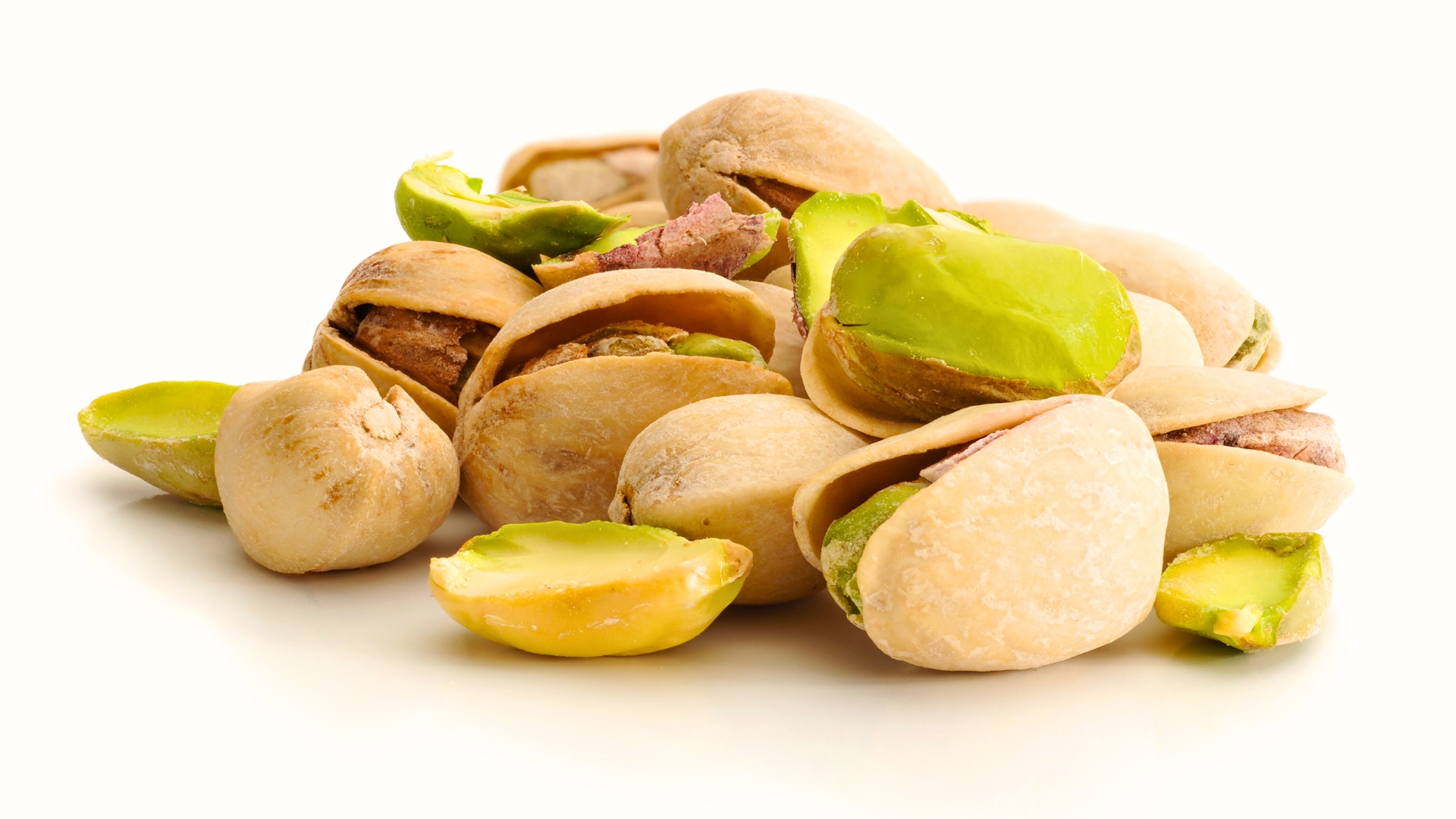These 12 Simple Tips Will Help You Grow Delicious Pistachios At Home With Ease
Growing pistachios at home might sound tricky, but it’s totally doable—and pretty fun once you get started. I tried it on a whim and was surprised by how low-maintenance these tasty nuts can be.
With a bit of patience and the right know-how, you can enjoy homegrown pistachios straight from your backyard. Plus, nothing beats cracking open a nut you grew yourself!
Here are a dozen tips that’ll make the process smoother and way more rewarding.
1. Choose the Right Climate
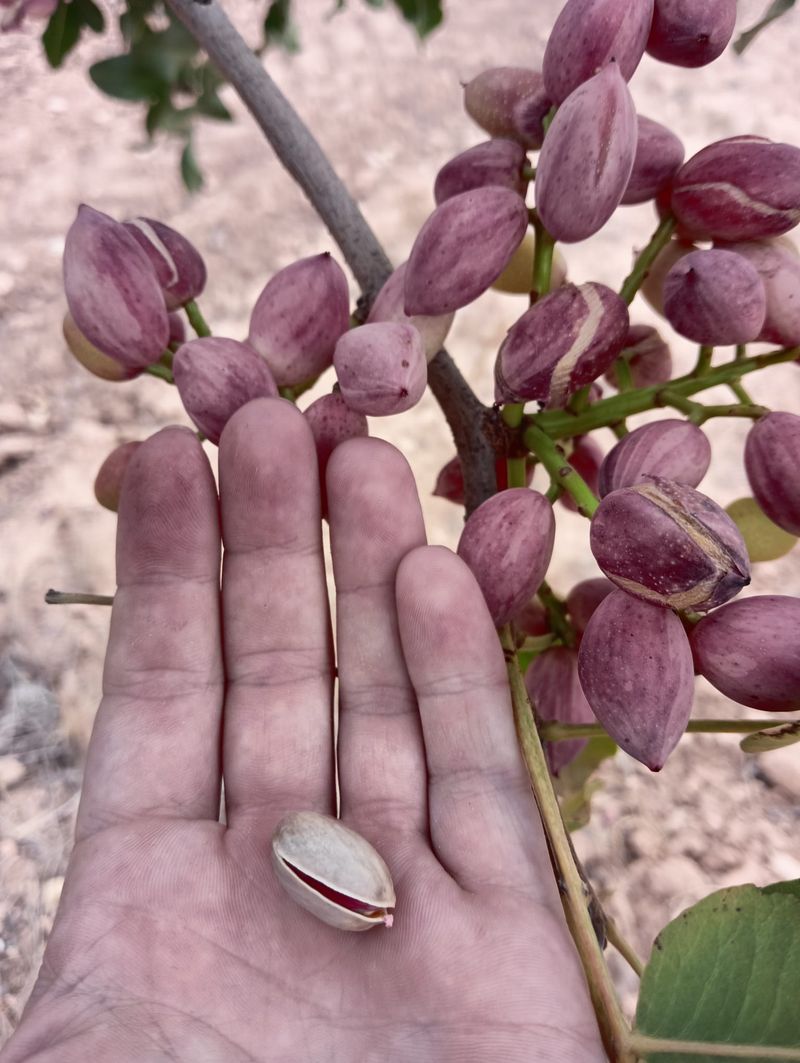
Pistachios thrive in regions with long, hot summers and cold winters. They need this temperature contrast to properly develop their nuts and maintain good health.
Before investing in pistachio trees, check your local climate zone. These Mediterranean natives require at least 1,000 chill hours below 45°F in winter and summer temperatures that regularly exceed 100°F for optimal nut production.
2. Select Male and Female Trees
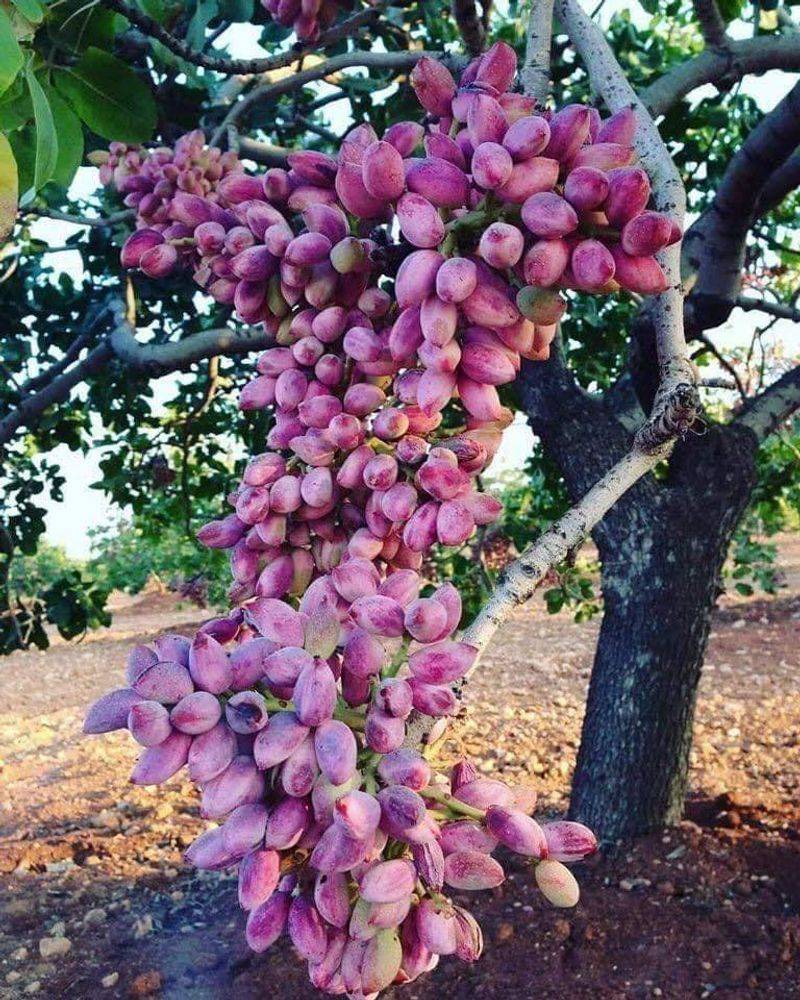
Unlike some fruit trees, pistachios are dioecious, meaning you’ll need both male and female trees for successful pollination and nut production.
Plant one male tree for every 8-10 female trees in your garden. The male trees won’t produce nuts but are essential for pollinating the females. Position them strategically so wind can carry pollen between trees during the early spring flowering period.
3. Prepare Well-Draining Soil
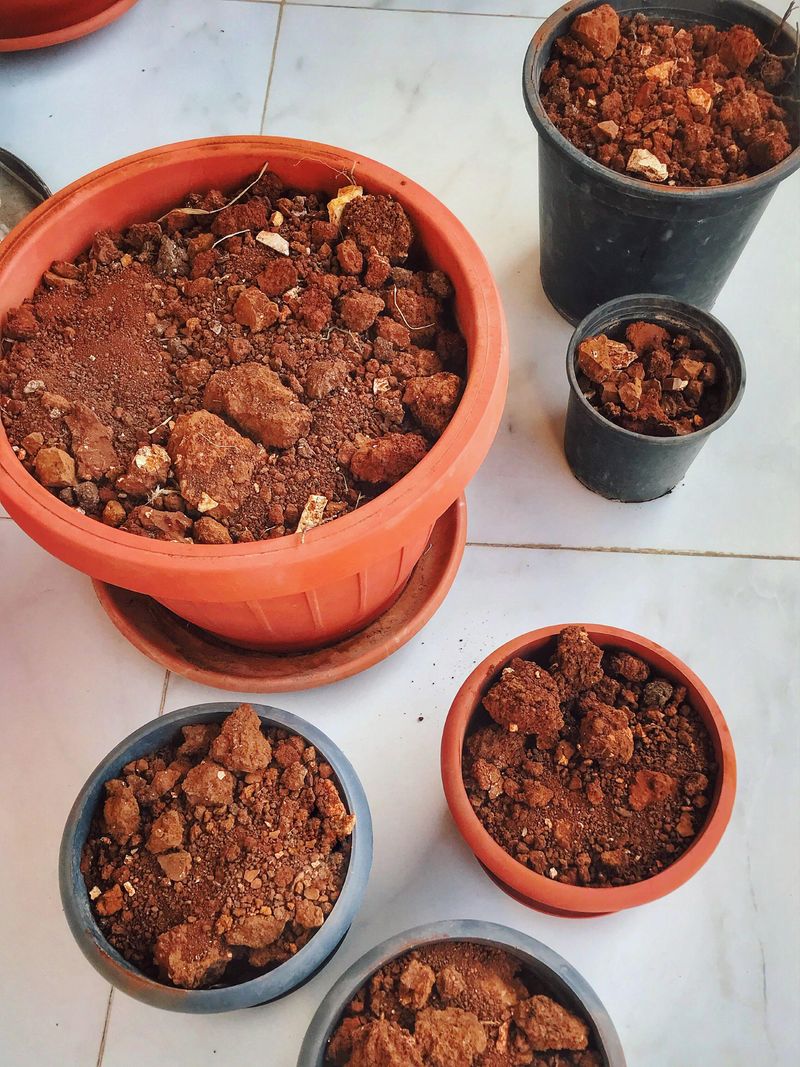
Pistachio roots hate sitting in water and are highly susceptible to root rot if planted in poorly draining soil. Create the perfect growing environment by amending heavy clay soils.
Mix in plenty of coarse sand and organic compost to improve drainage. Aim for a slightly alkaline soil pH between 7.1 and 7.8. These desert-adapted trees prefer sandy loam soils that allow excess water to drain quickly away from their roots.
4. Space Trees Properly
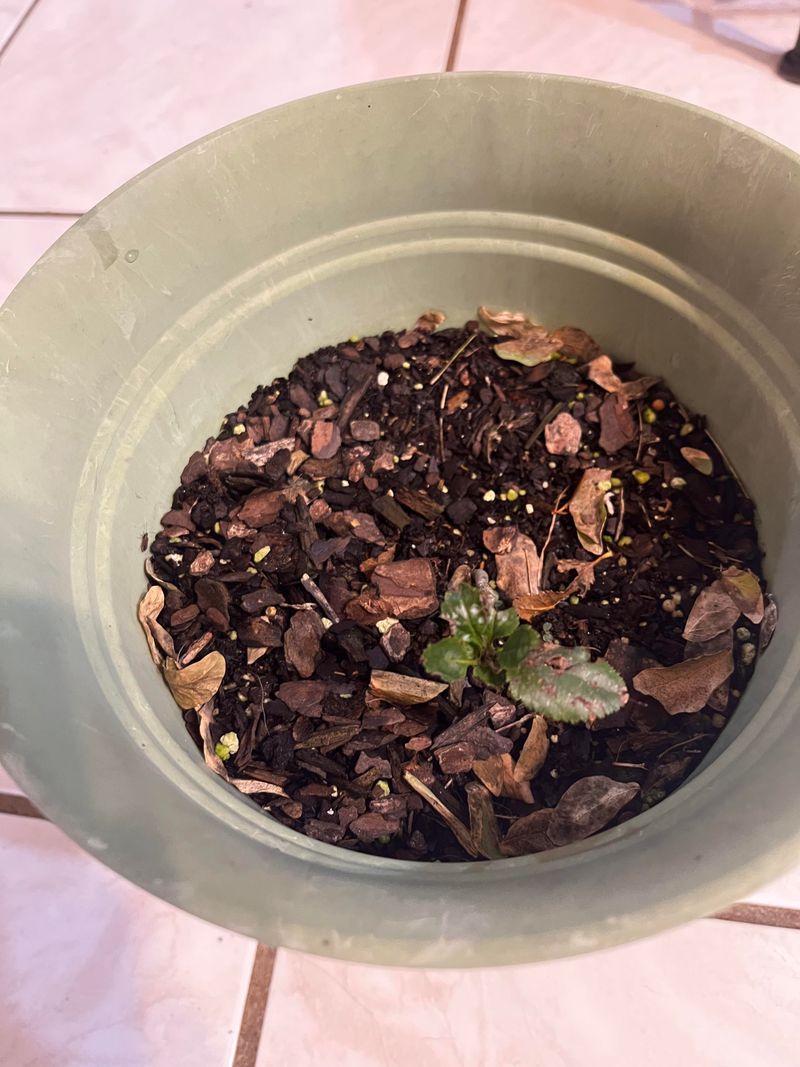
Pistachio trees may start small, but they’ll eventually reach 20-30 feet in height with an equally impressive spread. Give them room to grow by planning your orchard layout carefully.
Space trees at least 20 feet apart to prevent overcrowding and competition for resources. This spacing also improves air circulation, reducing disease pressure. Remember that pistachios can live for centuries, so their mature size matters when planning your home orchard.
5. Provide Adequate Irrigation
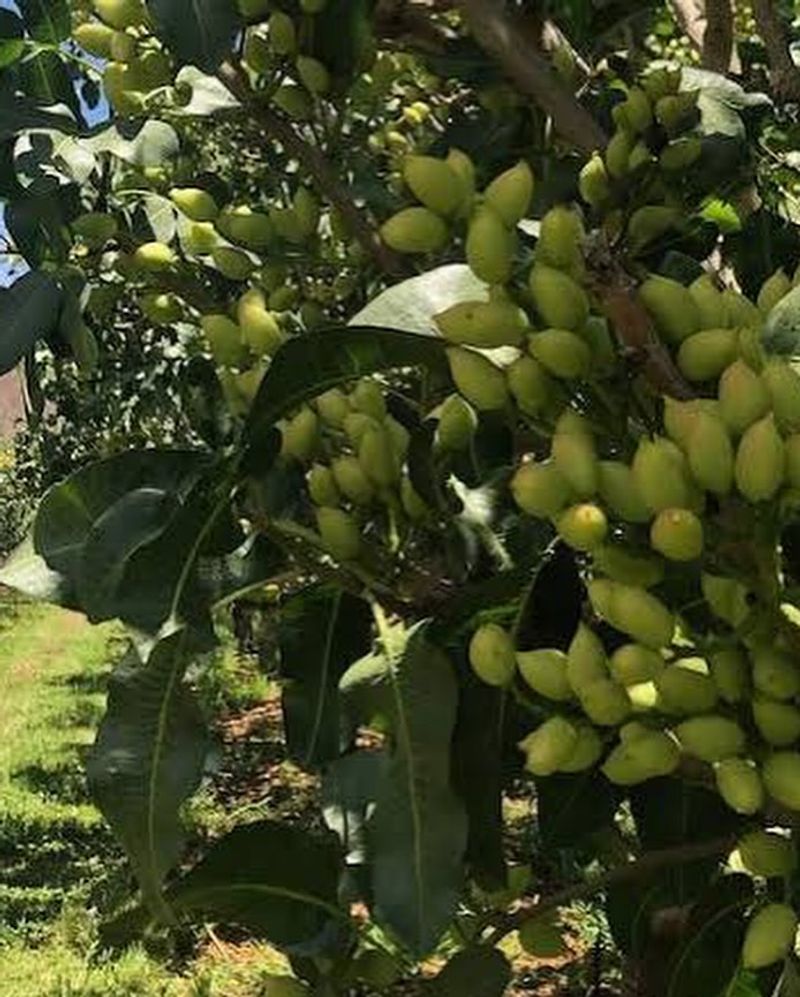
While drought-tolerant once established, young pistachio trees need consistent moisture during their first few years. Develop a smart watering strategy that evolves with your trees.
Water deeply but infrequently to encourage deep root development. As trees mature, reduce watering frequency but increase volume. Established trees typically need thorough irrigation every 2-3 weeks during summer, with little supplemental water needed during winter dormancy.
6. Apply Balanced Fertilizer
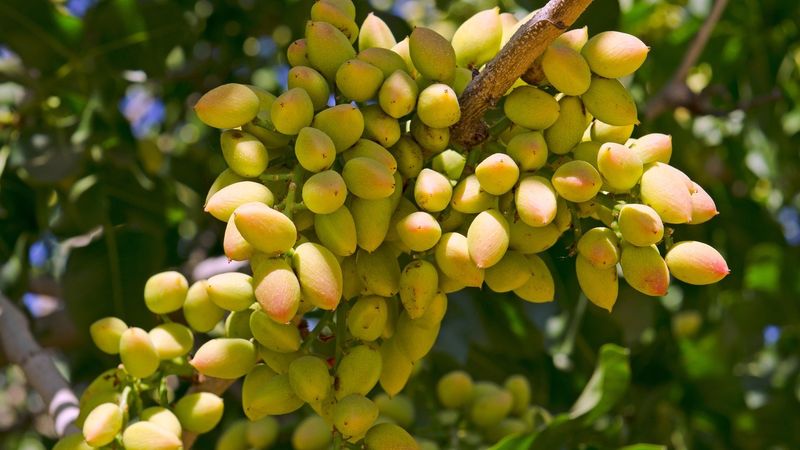
Pistachios need proper nutrition to produce abundant, flavorful nuts. Their fertilizer needs change as they mature from young saplings to productive trees.
For young trees, apply a balanced NPK fertilizer like 10-10-10 in early spring. Once trees begin bearing nuts (usually after 5-7 years), increase potassium and phosphorus to support nut development. Avoid high-nitrogen fertilizers on mature trees as they promote leafy growth at the expense of nut production.
7. Practice Patience
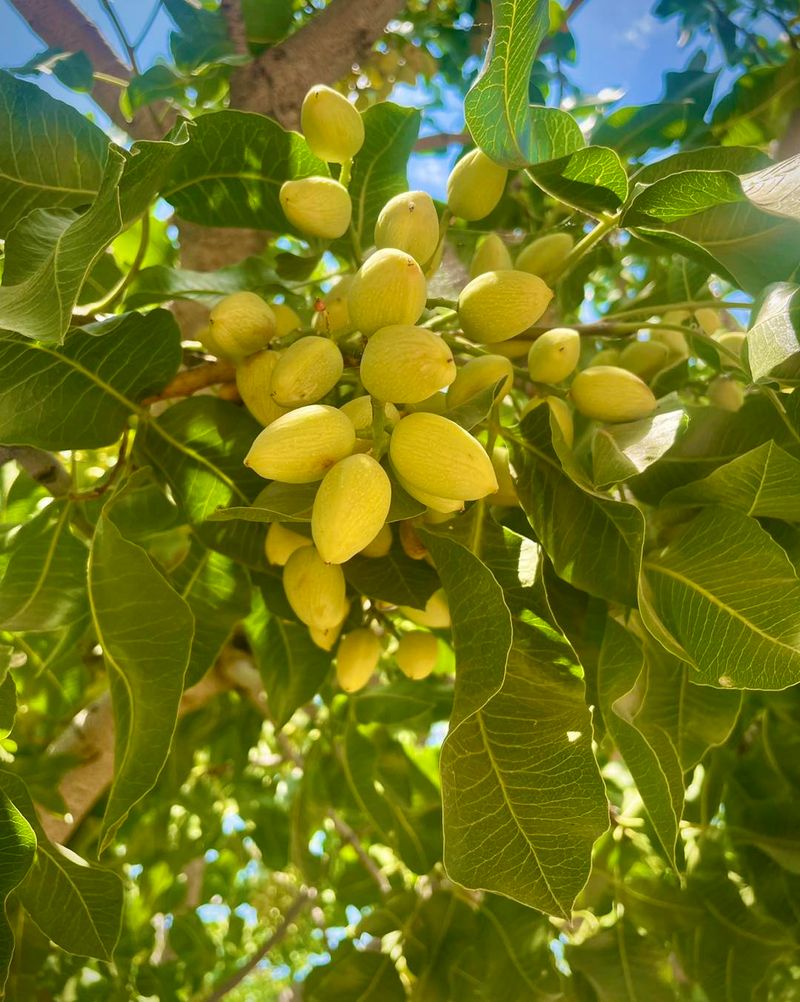
Growing pistachios requires a long-term commitment, as these trees won’t produce nuts overnight. Understanding their timeline helps manage expectations and maintain motivation.
Expect to wait 5-8 years before harvesting your first crop from grafted trees. Seedling-grown trees take even longer, sometimes 8-10 years. The good news? Once productive, a well-maintained pistachio tree can bear nuts for over 50 years, making your patience ultimately worthwhile.
8. Prune for Productivity
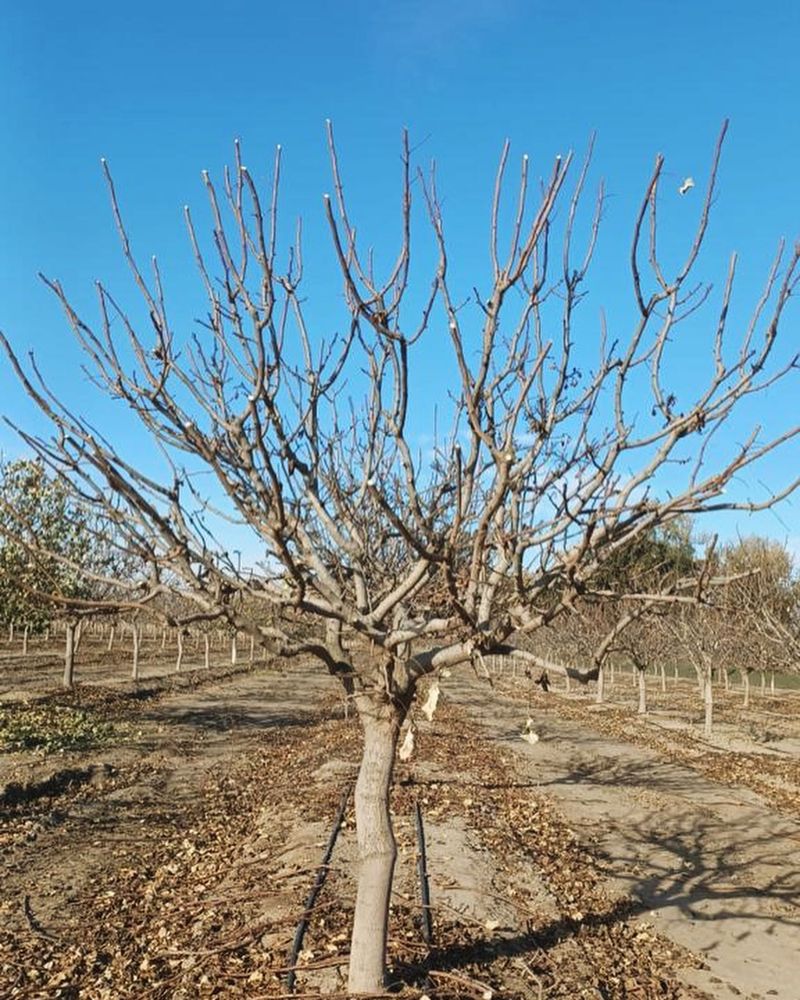
Strategic pruning helps pistachio trees develop strong branch structures and improves nut production. Learn the basics of pistachio pruning to maximize your harvest.
Prune young trees to establish a modified central leader with 3-5 well-spaced scaffold branches. For mature trees, focus on removing dead wood, crossed branches, and inward-growing limbs. The best time to prune is during winter dormancy when the tree’s energy is concentrated in its roots.
9. Monitor for Pests

Several insect pests can damage pistachio trees and reduce your harvest. Regular monitoring helps catch problems early when they’re easier to manage.
Watch for pistachio psylla, stink bugs, and navel orangeworms, which are common pistachio pests. Encourage beneficial insects like ladybugs and lacewings that prey on these pests. For serious infestations, consider organic insecticidal soaps or neem oil before resorting to chemical controls.
10. Prevent Common Diseases

Fungal diseases can threaten pistachio trees, especially in humid conditions. Prevention is much easier than curing established infections.
Alternaria late blight and Botryosphaeria panicle blight are common concerns. Maintain good air circulation through proper spacing and pruning. Apply copper-based fungicides in early spring before symptoms appear. Promptly remove and destroy any infected plant material to prevent disease spread.
11. Harvest at the Perfect Time

Knowing when and how to harvest pistachios ensures you’ll collect nuts at peak flavor. Look for visual cues that signal ripening time has arrived.
Pistachios are ready to harvest when the outer hull (epicarp) changes from green to pinkish-red and begins to separate from the shell. This usually occurs in late summer to early fall. Spread tarps under trees and gently shake branches or use a long pole to dislodge ripe nuts.
12. Process Nuts Properly
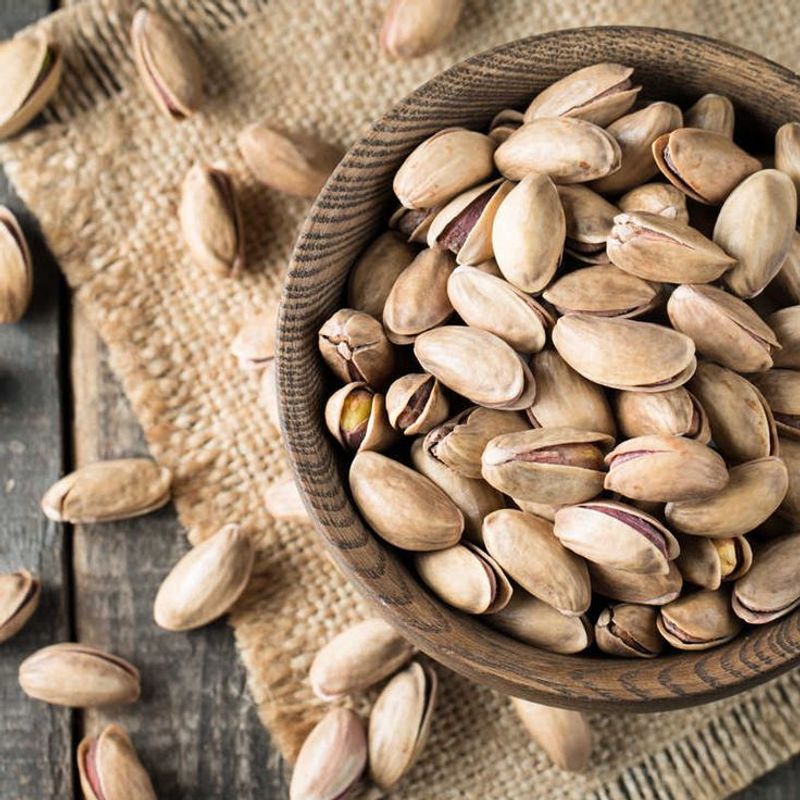
After harvesting, pistachios require processing to preserve their quality and flavor. Follow these steps for delicious homegrown nuts.
Remove the outer hulls within 24 hours of harvest to prevent staining and flavor deterioration. Rinse the nuts and dry them thoroughly in the sun for 3-4 days, stirring occasionally. Store dried nuts in airtight containers in a cool, dark place where they’ll keep for months.

